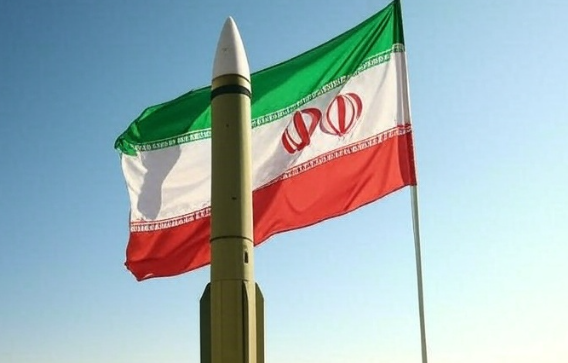International Atomic Energy Agency Issues Warning On Underground Iranian Nuclear Facilities:The standoff between Iran and the United States over Tehran’s nuclear ambitions has entered a critical phase. The chief of the UN’s atomic watchdog IAEA, Rafael Mariano Grossi, has issued a stark warning: Iran now possesses the materials required to build a nuclear weapon. In a recent interview, Grossi cautioned that the collapse of nuclear negotiations will most likely trigger military action.
International Atomic Energy Agency Issues Warning On Underground Iranian Nuclear Facilities
The standoff between Iran and the United States over Tehran’s nuclear ambitions has entered a critical phase. The chief of the UN’s atomic watchdog, Rafael Mariano Grossi, has issued a stark warning: Iran now possesses the materials required to build a nuclear weapon. In a recent interview, Grossi cautioned that the collapse of nuclear negotiations will most likely trigger military action.
Grossi emphasized that a surgical military strike would not be enough to eliminate Iran’s nuclear capabilities. Iran’s nuclear facilities are deeply fortified, buried as much as half a mile underground. “To be hit by a single surgical strike is not really possible,” he warned, adding that any attempt to dismantle Iran’s capabilities would require a far more complex and extensive operation.
As nuclear talks remain in limbo, U.S. President Donald Trump reiterated his administration’s firm stance. Trump stated unequivocally that any future agreement with Iran must include a complete halt to uranium enrichment. “They won’t be enriching. If they enrich, then we’re going to have to do it the other way,” Trump said, suggesting the possibility of a military response. “And I don’t really want to do it the other way, but we’re going to have to.”
Iran’s Supreme Leader Ayatollah Ali Khamenei dismissed the U.S. demands, asserting that the United States has no right to interfere in Tehran’s uranium enrichment decisions. “The first thing we say to the American and other parties is, what business do you have in this? Why do you interfere in whether Iran should have enrichment or not? What’s it to you?” he declared.
In a parallel development that has raised alarm in the intelligence community, Iranian state media reported that Tehran has obtained a trove of highly sensitive Israeli intelligence. This reportedly includes files related to Israel’s nuclear facilities and strategic defense plans. The haul, which was acquired in a covert operation, comprises a vast array of documents, images, and videos.
Iran appears to be ramping up its preparations for a potential full-scale military confrontation. According to a report by the Wall Street Journal, Tehran has signed a significant deal with China to import thousands of tons of ammonium perchlorate—a chemical compound crucial for manufacturing solid-fueled ballistic missiles. Once delivered, this stockpile could allow Iran to produce up to 800 new missiles.
This missile buildup is not merely defensive. Iran seems to be preparing for a broader regional military strategy. The WSJ report suggests that some of these missile materials might be supplied to proxy militias, including the Houthis in Yemen. Meanwhile, the Iranian military is reportedly planning to establish five new missile bases across the country. Construction blueprints are already in place and operations are beginning to take shape.
Adding to the regional tensions, the Islamic Revolutionary Guard Corps (IRGC) recently unveiled its first underground drone base. This facility is stocked with domestically produced UAVs, surveillance drones, and loitering munitions—further enhancing Iran’s tactical capabilities.
Iran has also introduced a new solid-fuel ballistic missile named “Kasim Baser,” with a range of 1,200 kilometers. The nation’s arsenal now includes several nuclear-capable missiles. Medium-range ballistic missiles like the Khorramshahr, Shahab-3, and Sejjil, as well as intermediate-range missiles such as Emad and Ghadr, are all reportedly capable of carrying nuclear payloads.
Iran’s Defense Minister recently stated that the country is fully prepared to defend itself in the event of any attack. With nuclear negotiations on the edge of collapse, the region stands at a crossroads—between diplomacy and a potentially devastating conflict.
Disclaimer:
This article is based on publicly available information, media reports, and statements from global leaders and organizations. It aims to provide a summary of recent developments related to Iran’s nuclear program and related geopolitical tensions. The content does not reflect any official position or endorsement. Readers are advised to verify facts independently and consider multiple perspectives before forming conclusions.

